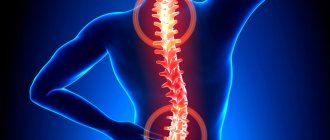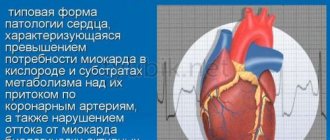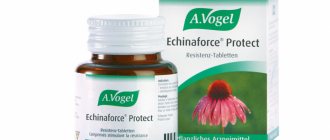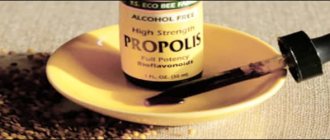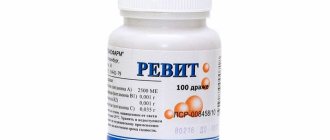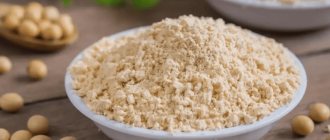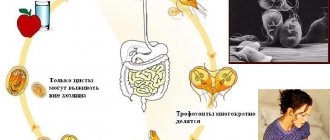A nootropic drug that helps restore metabolic processes in brain tissue - Pantogam. The drug has its own characteristics due to its composition.
It is similar to B vitamins, but at the same time has all the properties of nootropics.
Pantogam contains the main component - calcium hopantenate, which improves brain function. Its main property is to increase the brain’s resistance to hypoxia and the effects of toxins.
The drug has anticonvulsant and sedative properties, has a beneficial effect on the patient’s mental work and memory. Increases performance and muscle tone of the gallbladder and bladder. Relieves alcohol intoxication in chronic alcoholism.
Pharmacokinetics and pharmacodynamics
Pantogam is a product based on calcium hopantenate. Produced in tablets and syrup. Pantogam Active is produced in capsules. Due to the active component, the following pharmacological actions are formed:
- the content of GABA (gamma-aminobutyric acid) affects the receptors of cells located in blood vessels and nervous tissue;
- the brain's resistance to oxygen starvation and the effects of toxins increases;
- the functionality of neurons improves, stimulation of anabolic activity;
- slight sedative effect combined with neuronal stimulation;
- decreased motor excitability;
- activation of mental and physical activity.
Due to the mechanism of action, the medicine is often prescribed for alcohol intoxication. It is effective in treating addiction. It is used to enhance the activity of novocaine and sulfonamides.
The pharmacokinetics of the drug are interesting, due to which the load on internal organs is reduced, the number of side effects and contraindications is reduced.
The absorption of the drug occurs in the gastrointestinal tract. It is quickly distributed throughout the internal organs and penetrates the blood-brain barrier into the brain. Metabolism does not occur. Excretion is carried out unchanged through feces and urine.
Pharmacological properties and composition
{banner_banstat0}
Pantogam increases anabolic processes in neurons and reduces motor excitability. The specific effect of the drug is associated with its neurometabolic, neuroprotective and neurotrophic manifestations. It is low-toxic and does not cause allergic reactions.
It has sedative and stimulating properties on mental abilities and performance. Improves blood circulation in the brain and enhances energy processes.
The drug is well absorbed from the gastrointestinal tract and penetrates the BBB. Most of it is concentrated in the kidneys, liver, stomach walls and skin. It comes out unchanged after two days. It is excreted from the body in urine, and a small part of what is taken in feces.
Pantogam is produced in the form of syrup for children, tablets and capsules. The syrup is colorless or slightly yellowish in color, with a cherry smell. Active ingredients of the drug
- main
– calcium salt of hopantenic acid; - auxiliary
- glycerol, sorbitol, citric acid, aspartame, cherry flavor and water.
Available in dark bottles with a 100 ml measuring spoon.
The tablets are white in the form of a flat cylinder. Active components:
- main
- calcium salt of hopantenic acid; - auxiliary
– methylcellulose, calcium stearate, magnesium hydroxycarbonate.
Tablets are produced in two dosages of the active substance: 250 mg and 500 mg.
Indications for use
The medicine has a wide spectrum of action and helps with many disorders. Therefore, it is often used in narcology, neurology, pediatrics, and therapy. The following indications for use are distinguished.
- Impaired cognitive function. They occur due to trauma, neurological disorders, and organic lesions.
- Psychiatric diseases. Used in combination with drugs in the treatment of schizophrenia.
- Extrapyramidal disorders. These are Parkinson's disease, nerve fiber degeneration, Huntington's chorea, myoclonus epilepsy.
- Epilepsy. Despite the complex effect of the drug, its effect is not enough. Therefore, an anticonvulsant is additionally used.
- Psychological deviations. This includes stress, emotional overload, decreased concentration and memory.
- Disorder of the urinary system due to neurological abnormalities. For example, urinary incontinence.
- Developmental delay in children. The medicine is used for disorders of speech, motor functions, and mental activity.
- Cerebral palsy.
- Hyperkinetic type disorder. For example, with attention deficit disorder.
- Neurosis in children, accompanied by tics and stuttering.
Before prescribing the drug, anamnesis is collected. Take into account drug interactions with other drugs. Therefore, the doctor needs to know exactly the patient’s condition.
Application area
{banner_banstat2}
For what purpose and why do specialists prescribe Pantogam to their patients:
- impairment of performance, psycho-emotional overload;
- therapy and prevention of extrapyramidal syndromes due to the use of antipsychotics;
- disturbances in active movement as a result of decreased muscle tone;
- cognitive problems due to TBI and neurotic disorders;
- neuroses with tics, stuttering, inorganic encopresis;
- changes in blood vessels as a result of the development of atherosclerosis;
- epilepsy with convulsive syndrome;
- schizophrenia with retardation;
- urinary disorders (urinary incontinence, enuresis);
- developmental delay in children, disorders of motor activity, speech, formation of school skills;
- mental retardation with behavioral disorders;
- different forms of cerebral palsy;
- damage to brain functions in children from the first day of life.
How to take the drug for children
The medicine is approved for use by children. It is important to choose the right dosage. But when taking pills, you need to consider the following principles:
- take 30 minutes before meals;
- syrup is used for children under 3 years of age, tablets for children older than this age;
- take only in the morning or afternoon.
A preliminary examination is carried out. Find out indications and contraindications. The diagnosis for which therapy is started is taken into account:
- extrapyramidal disorders - no more than 0.5 g up to 4 times a day with a course of treatment of up to 3 months;
- epilepsy of any origin - up to 0.5 g 4 times a day with a course of treatment of up to 6 months;
- urination disorder - up to 0.5 g 3 times a day with a course of 1-3 months;
- developmental delay - up to 0.5 g 3 times a day with a course of treatment of 2 months;
- hyperactivity - up to 1 g 2 times a day for up to 4 months;
- neuroses - up to 0.5 g 6 times a day for up to 4 months.
The smallest dosage recommended for children is 0.25 g. It is best taken if the disorder is minor and requires a short course of treatment. The worse the patient’s condition, the greater the concentration of the drug required in 1 day. After completing the course, they are re-examined and tested.
Tactics and strategy for taking the drug
{banner_banstat3}
Pantogam in tablets or syrup for children is taken orally after meals, half an hour later. You must take the medicine before 16-00, do not take the drug in the evening or at night, otherwise you will have difficulty falling asleep.
The dose for single use in adult patients is 250-1000 mg, per day - 1.5-3 g. For children - 250-500 mg and 750-1000 mg, respectively.
Therapy is long-term - from a month to four, and sometimes up to six months. Repeated treatment should begin after a 3-6 month break. The dosage directly depends on the disease, so independent use of the drug is strictly prohibited.
The drug is used in combination therapy with other drugs.
From the instructions it follows that the approximate dosages of Pantogam for adults, depending on the disease, are as follows:
- epilepsy
– 750-1000 mg per day, duration – 12 months or more; - neuroleptic syndrome
– up to 3 g per day, from three months; - extrapyramidal hyperkinesis
– 500-3000 mg, 4 months; - elimination of the consequences of head injury and neuroinfections
– 250 mg in 3 doses per day; - to restore performance
– 250 mg three times a day; - extrapyramidal syndrome
due to therapy with antipsychotics - adults - 500-1000 mg three times a day, children - 250-500 mg three times a day, duration of administration is 1-3 months; - childhood tics
– 250-500 mg 3-6 times a day, duration 1-4 months; - improper urination process
- after 12 years - 0.5-1 g three times a day, from 3 to 12 years - 250-500 mg, duration 1-3 months; - schizophrenia with the use of psychotropic drugs
– 500-3000 mg per day, duration 1-3 months.
This dosage is designed for the use of tablets and syrup. During treatment, auxiliary therapy with other drugs of the same group is not allowed.
Children's dosages
{banner_banstat4}
For children, the medicine is recommended from 1-3 g per day, based on age and disease. From the first day until 3 years of age, only the drug in syrup can be given; after the age of three, the drug in tablets is allowed.
The treatment regimen involves a slow increase in dose over 7-12 days, followed by therapy with the maximum dose for 15-40 days, followed by a 7-day dose reduction until the end of use of the drug. Repeated treatment is possible after 1-3 months.
Dosage for adults
If a person is over 18 years old, the amount of the drug is very different from children. The range of applications for which the medicine can be used has been expanded. The following doses are recommended:
- cognitive disorders - 0.25 g 4 times a day;
- extrapyramidal disorders - 0.5 g or more 3 times a day for up to 4 months;
- epilepsy - up to 1 g 3 times a day with a course of treatment of up to 6 months;
- psycho-emotional overload - up to 0.25 G 3 times a day;
- urinary disturbance - up to 1 g 3 times a day.
The minimum dosage for adults is 0.25 g. If you count it over 1 day, the size increases to 1.5 g. This concentration is suitable for psycho-emotional overload and impaired cognitive functions. For more severe lesions, the amount of the substance is increased.
Because there are relatively few side effects, the drug is often prescribed to adult patients with severe disorders. When using the product, you will need to be tested again. For example, a general clinical examination of blood and urine, examination by a neurologist, MRI. The medicine is often prescribed in combination with other drugs. Please note that when using different types of substances at the same time, you should wait an interval of 15-30 minutes to reduce the risk of cross-reaction.
Side effects and contraindications
Since the drug does not accumulate in the body and is completely eliminated from it, the number of side effects is sharply reduced. They occur infrequently and disappear quickly when the drug is eliminated. The following negative actions are identified:
- allergic manifestations on the conjunctiva of the eyes, skin;
- headache, dizziness, increased excitability, tinnitus;
- mood changes, sleep disturbance, lethargy, malaise.
If any type of side effects occur, the drug should be discontinued immediately. If they are minor, the dosage may be reduced. The following contraindications for use are identified:
- pregnancy, lactation;
- for tablets - children under 3 years of age;
- severe kidney damage;
- individual intolerance to components.
The drug should not be used in case of severe kidney damage, since the substance is completely excreted in the urine. This can damage the glomerular apparatus and disrupt the filtration system. Therefore, the patient’s well-being will worsen. Since there are not enough clinical trials in pregnant and breastfeeding women, the medicine is not recommended. But no exact contraindications have been identified during this period.
special instructions
When using a short course of treatment, the medicine can be used with other nootropic drugs. If treatment is carried out for more than 1 month, it is better to use only 1 drug. The risk of sudden side effects will increase.
When using Pantogam, you need to be careful about your well-being in the first 2 weeks of the course. This is due to the fact that concentration may decrease, so it is better to stop driving a vehicle. If this effect does not occur in the future, the ban on driving a car or operating heavy machinery is lifted.
The medicine can cause an overdose, which will cause a significant deterioration in the patient’s well-being.
Therefore, it is prohibited to use the product not according to the instructions from the doctor. In case of overdose, sleep disturbance is noted. The person may experience insomnia or drowsiness. There is noise in the ears and headache.
In this case, it is recommended to drink activated carbon and consult a doctor. If your health continues to deteriorate, he will prescribe gastric lavage and symptomatic therapy.
Cases of overdose and side effects
{banner_banstat5}
If you mistakenly take a larger amount of the drug, an increase in adverse reactions occurs: drowsiness, insomnia, noise in the head and headache.
You should perform a gastric lavage, drink activated charcoal or Smecta. Treat symptoms as needed. An overdose occurs when an increased dose of medication is taken by mistake; this indicator is individual for each person.
Side effects from taking Pantogam include allergic manifestations:
- rhinitis;
- conjunctivitis;
- skin rashes.
To eliminate them, a dose reduction or complete discontinuation of the drug is required. Insomnia or drowsiness, noise and pain in the head often occur. There is no need to cancel treatment - this is a short-term phenomenon.
Interaction with other drugs
During a general examination and medical history, the doctor carefully finds out what medications the patient uses. This is especially important since Pantogam affects other medicines. All drugs that penetrate the blood-brain barrier into the brain are taken into account. Detects the following drug interactions:
- Phenobarbital, Carbamazepine, neuroleptics - strong anticonvulsant effect;
- barbiturates - increase the duration of action;
- Glycine, etidronic acid - enhances the effect of Pantogam;
- local anesthetics (lidocaine, novocaine) - enhanced anesthetic effect.
If there is no compatibility, only one of the remedies that will be most important to the patient is used. When cross-reaction occurs, one of the drugs may cause side effects. In this case, the medications are discontinued and the patient’s well-being is monitored. Then the most important drug is re-prescribed for use, gradually increasing the dosage so that the therapeutic effect occurs.
It is important that Pantogam reduces the side effects of Phenobarbital. This is convenient for patients who cannot take other medications besides it. Therefore, Pantogam is often combined with Phenobarbital, even in the absence of urgent need.
Analogues and substitutes
If the patient has individual intolerance, it is recommended to select an analogue, which also has a nootropic and anticonvulsant effect, but the patient tolerates it better. If there are no contraindications for taking Pantogam, substitutes with a lower cost are selected. Its average price is 600-650 rubles. Data on analogues are presented in the table.
| A drug | Active ingredients | Manufacturer | Price |
| Pantocalcin | Calcium hopantenate | Valenta pharmaceuticals, Russia | 400-450 |
| Phenibut | Aminophenylbutyric acid | Obninsk Chemical and Pharmaceutical Company, Russia | 50-500 |
| Picamilon | Nicotine gamma aminobutyric acid | Pharmstandard Ufa Vitamin Plant, Russia | 80-150 |
| Mexidol | Ethylmethylhydroxypyridine succinate | Pharmasoft, Russia | 240-640 |
| Gopantham | Calcium hopantenate | Altaivitamins, Russia | 350-500 |
Since Pantogam penetrates the blood-brain barrier, affecting the brain, it is best to use it on the recommendation of a neurologist. When a replacement is made with another active substance, they undergo a preliminary examination. This is done in case of sudden onset of side effects that significantly worsen the patient’s well-being. When prescribed by a doctor, this risk is reduced.
What is the best way to choose an analogue for children?
The choice of analogue for children is especially important. It is better not to make a replacement on your own, since parents do not always take into account indications and contraindications, relying only on cost. If the current active ingredient is suitable, use products containing an identical active ingredient, that is, calcium hopanthenate. In this case, Pantocalcin and Gopantam are suitable. The dosage will remain identical, but parents will spend less money on treating their child.
When choosing a medicine with another main active ingredient, you must carefully read the instructions for use. Not all of them are approved for use by children. Pantogam differs in that it is produced in syrup, so it can be consumed even by infants.
Some analogues have not undergone sufficient clinical trials (Mexidol) for children, so it is recommended to choose other medications that are fully approved by doctors.
If analogues are used in tablet form, they can be prescribed only from 3 years of age. But for each use of the drug in this case, you will need to undergo a full examination and collect an anamnesis.
When is Pantogam or its analogues needed?
Pantogam is an effective remedy with a nootropic and anticonvulsant effect. It is important that it can be used by patients of absolutely any age. It is used to treat newborns and infants, adults and elderly patients. It is often recommended by neurologists, as it has a minimal number of side effects and contraindications.
You can use analogues, but it is important to find out the difference between the drugs and take into account the patient’s medical history.
They must first undergo a general examination and laboratory and instrumental examinations. Then the risk of sudden, unexpected side effects is significantly reduced. In therapy and neurology for adults, one of the presented analogues can be used if it is suitable for the indications for use. When it comes to pediatrics, it is better to use medications that have undergone clinical trials. Their effective action has been proven, all negative aspects have been identified.
Complex of opinions
According to doctors, Pantogam is effective in treating children under 10 years of age. This is too weak a remedy for adults.
In children, improvement occurs within a week. The effect of the drug is mild, it does not overstimulate the child. It is distinguished by a convenient release form, safety, and affordable price. The downside is the possibility of an allergic reaction and skin rashes.
There are many reviews online from parents of children who were treated with this drug. Many mothers did not understand the reasons for prescribing this medicine and did not undergo treatment.
Some note that after the start of therapy, disturbances occurred in the gastrointestinal tract, and increased excitability was observed in the child. But there are still many more positive reviews about Pantogam; the drug helped cure stuttering, the consequences of a head injury, the condition of newborns significantly improved, and other positive results were noted.
Adult patients report significant improvements in chronic fatigue, insomnia and stress.
Based on the advice of patients, the drug should not be used for preventive purposes; therapy should be prescribed by a doctor according to indications. This is due to the possible manifestation of allergic symptoms, which can harm the patient’s health.
